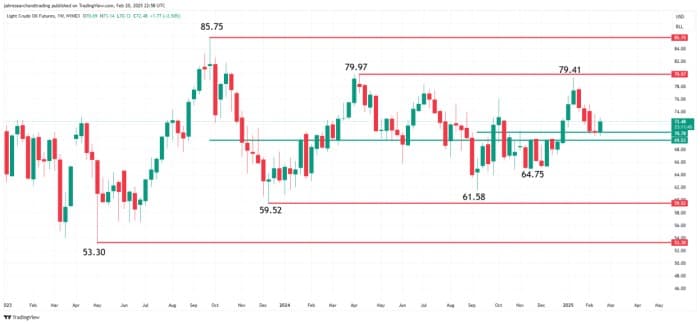Crude oil prices recorded a choppy trading week, underpinned by geopolitical risks and significant supply disruptions. The market closely followed developments in the Russia-Ukraine conflict, where a Ukrainian drone attack on Russia’s Kropotkinskaya pumping station disrupted oil flows via the Caspian Pipeline Consortium (CPC). This pipeline is a vital route for Kazakhstan’s crude exports, and the attack reduced oil flows by 30-40%, potentially withdrawing up to 380,000 barrels per day from global supply?.
In addition to the disruptions in Russia, extreme cold weather in the United States affected oil production. North Dakota’s oil output was reduced by up to 150,000 barrels per day, contributing to tighter supply conditions. These supply-side challenges offered critical support to crude prices, keeping the market buoyant despite broader economic uncertainties?.
EIA and API Data Offer Mixed Market Signals
The latest inventory data from the U.S. Energy Information Administration (EIA) and the American Petroleum Institute (API) provided a nuanced picture of market fundamentals. According to the EIA, U.S. crude oil inventories rose by 4.6 million barrels to 432.5 million barrels, remaining 3% below the five-year average for this time of year. Gasoline inventories fell by 0.2 million barrels, while distillate stocks saw a larger draw of 2.1 million barrels, about 12% below the five-year average?.
The API data aligned closely with the EIA, reinforcing the…

